#Introduction
P2PU has always believed in experimentation, and that the results of our experiments should be shared. One of these areas of experimentation is our work set-up - we are a totally virtual, distributed non-profit, with staff and volunteers all over the world.
In 2012, we decided to try running a pop-up office for 1 month. This report documents the set-up, experience and evaluation of the pop-up. Distributed working is becoming increasingly popular, particularly in the non-profit and tech worlds, where staff with expertise may be located in several countries. While this model has many benefits, it also present a unique set of challenges. It is our hope that this report provides useful guidelines for other virtual organisations who might want to run short-term offices, and a face-to-face model for other global, distributed communities.
When planning the Berlin Office, we looked online for advice and guidelines on how to run a project like this, which we conceptualised of as part event, part conference, part residency. We struggled to find any resources which were applicable to our experience, so we created this document, as both a record of how we went about planning and running the office, and as a tool for other communities and organisations who might be grappling with the same questions.
We’re not looking to influence anyone, and we’re sure that other people might take a look at how we did things and decide to do it differently. In fact, we’d be delighted to hear from anyone who has modified our process – we hope it can be a useful starting point and would love to see where you ended up.
#Background
Since our launch in 2010, P2PU has always had at least one meeting every year where core community members and staff have been able to get together and work face-to-face for a few days.
Due to time restrictions (meeting were usually held over a long weekend) we tended to focus these meetings on strategy planning and other “big” conversations about the overall direction of the organisation. However, by 2012, we felt that changes that had taken place in P2PU meant that we needed a different kind of meeting.
From an organisational perspective, the more formalised structure that P2PU was growing into (at that point, four full and two part-time staffers) coupled with the distributed nature of our staff and core volunteers (we are spread across five continents and 9 time zones) meant that few of us had actually worked together in the same place, at the same time, for any sustained period. Some staffers had never met face-to-face.
There was also a fair amount of staff turnover in the early months of 2012, and while this was understood by most staffers and volunteers as being expected and natural for a small non-profit working in a highly experimental environment, it also caused some feelings of unsettledness and anxiety. We felt it would be valuable to refresh and cement the ties between us - both for members of the community and staff.
Secondly, we realised that there were several projects that needed attention and input, and that these projects were too important to be managed over a few days. Platform UX design, building the prototype of the Mechanical MOOC, schools development, and developing a mentorship platform were projects that we had wanted to work on for a while. We knew that they would benefit from multiple eyes and opinions, which is difficult to replicate and execute via email and over several time zones.
These factors, plus the fact that we knew that the most productive time for any work on P2PU projects is when people are in the same physical space, led us to develop the idea of a pop-up office, to be held over a month in Berlin in July 2012.
Location, Location, Location Berlin has always been a favourite spot for P2PU. It is inexpensive compared to the rest of Europe, and easily accessible from just about anywhere. P2PU has a loose network of friends in Berlin, and other organisations like Mozilla and Soundcloud were planning events in the city at the same time, which opened up possibilities for collaborations.
Paying for it all Based on the budgets from previous meetings in Berlin, we estimated an overall cost of U$30 000. This budget allowed us to offer some financial support to staff and volunteers in the form of fellowships, which would cover the cost of flights and shared accommodation in rented apartments. This, we hoped would enable a varied group of people to the meeting, and allow people to stay long enough to make the working time productive. It also allowed for rental of shared working space, some food and entertainment budget, and general office expenses. This funding was provided by a grant from the Shuttleworth Foundation.
Who to invite (and how to make that decision) We have experimented with various application methods for P2PU meetings in the past, and have never found one that we’re 100% happy with. Skin-in-the-game is the usual yardstick we use - a rough measure of commitment and involvement in either the day-to-day workings or overall direction of the project. However, this is difficult to quantify, and coupled with the fact that we needed some people with specific skills (UX and web design, coding ability) in Berlin made the process more complicated. In the end, we asked potential applicants to include an account of previous involvement, a list of their hard skills, the amount of time they could commit to being in Berlin and a reference from another P2PU community member in their application. These were evaluated by a group of 2 staffers and 2 volunteers, who made recommendation based on an applicant’s track record in the community, the quality of their proposed project, their skills and the length of their stay. In addition, we invited applications from some developers via Google’s summer of code internship programme, in order to make sure we got enough people with hard skills into the office. This method was better than others we have used in the past, but is still not 100% satisfactory because it was difficult to evaluate some applications from newbies.
#Logistics

EAT - The team that eats together, meets together
P2PU people take good food very seriously, and cooking and eating together was one of the activities we wanted to encourage during the pop-up. One of the apartments was doubled as a communal cooking space, and one of the volunteers was designated chef. We provided the ingredients for several team meals, some of which were open to guests, and others which were kept smaller.
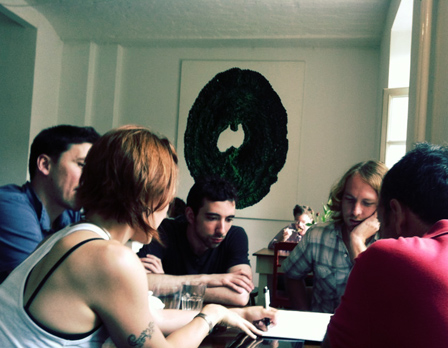
WORK - Just, like, do it
Finding the ideal space was a priority for the organisers. We knew we needed a large area, but renting an office felt too formal, and we wanted to connect with other communities in the city. Locating P2PU within an existing co-working space and community made the most sense. Berlin is well known for having several co-working spaces, with desks for rent. We decided to use the Agora Collective, a group of co-working enthusiasts in the south-west of Berlin. Several factors attracted us: the price was good, AGORA have a large space, including a silent working area, and were able to provide us with a room for noisier working sessions. They have a cafe on the ground floor which provided daily lunches and coffee, and we were able to use the space on weekends. The deliberately un-commercial and less tech-heavy culture that AGORA have created was not a factor in choosing the space, but was, in hindsight, a benefit.
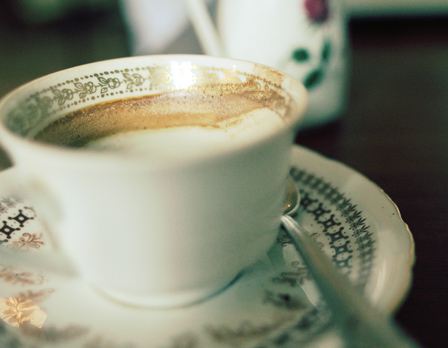
SLEEP - No rest until Neukölln
All participants were given a maximum budget for renting apartments in Berlin, and encouraged to self-organise, with advice from staffers on the best areas, travel logistics, and how to get around. This worked well, not only because it was cheaper and saved the organisers a great deal of effort, but because it contributed to the group dynamic, particularly for staffers and volunteers who had not met before.
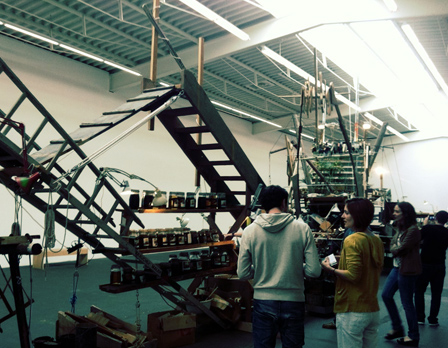
PLAY - More than video games
The social aspect of P2PU meetings has always been important, and one of the objectives of the residency was to provide staffers and volunteers to spend time together outside of work. This was helped by the fact that several participants had friends or partners visit them during their time in Berlin, which helped us to remember to stop working and have some fun. A shared google calendar was started for people to add events, and these included organised outings to galleries and museums, group meals at restaurants (subsidised by P2PU) a visit to a traditional beer garden and an evening barbecue at Templehof airport. Berlin has no shortage of interesting diversions, and a highlight was the visit several participants made to Teufelsberg, an abandoned NSA listening post on a man-made hill in the forests west of the city.
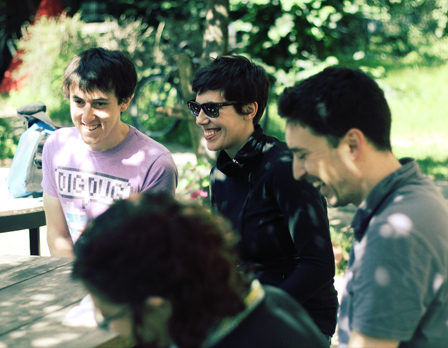
While we knew that there were some special projects that we wanted to work on during the Berlin residencey, one of the objectives was to allow P2PU staffers and volunteers to get on with the day-to-day work of P2PU, which is usually done remotely.
To this end, we structured the days fairly loosely, starting with a morning stand-up at 10am, at which all participants would present what they had done the day before and what they were intending to do that day (in 2 minutes or less!). We also encouraged informal work discussions over coffee and in the garden at AGORA.
While we encouraged an informal atmosphere, we also expected participants to work an 8-hour day, and be available for some weekend work during events we held with partners (Creative Commons and Mozilla). This proved to be harder to manage than we expected - people who are accustomed to working remotely tend to have their own rhythms, and several participants felt that the working days were too structured and too long. Organisers, on the other hand, were frustrated by participants who regularly arrived late.
Some afternoon and evening activities (visits to galleries and other sites and team meals) were planned and it was made clear that attendance, while not mandatory, was expected. We also encouraged participants who were in Berlin for the duration of the month to take one full day off.
Being a distributed community, with members all over the world, access and participation are always issues that we are aware of at P2PU. In an effort to connect the the Berlin office with the wider community we tried as much as possible to broadcast what we were working on (and solicit other opinions) via the web.
Daily standups were blogged the same day, new work was posted to the mailing list and blog, and several public conference calls were held to encourage participation from those in the community who were unable to join the event.
#Reflections
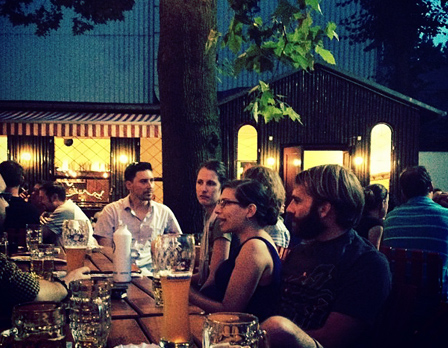
It is always difficult to sum up experiences like the Berlin residency, and there is always a risk that some perspectives are more weighted than others.
When an event is funded externally, as this was, there is also an obligation on the part of organisers to show funders that their money has been well-spent, but some outcomes that are difficult to quantify. We have used several mechanics to do this, but it is also important to remember that some benefits, like community building and workflows which lead to greater efficiency are harder to measure. In this respect, it has been useful to take a longer-term view, look at the organisation 6 months after the event and see how our working methods have changed and where improvements have been made.
If we evaluate the experiment from a project point of view, there were many positive outcomes. The UX and mentorship projects were realised, the mechanical MOOC was prototyped and those not able to join the event were able to follow and participate online. While there were frustrations, these were not always insurmountable, and in some cases were a result of miscommunication. We asked participants for feedback from the event, and asked them to rate the experience in terms of green, orange and red (green = things they liked, orange = things they had concerns or questions about and red = things they did not like). Using this matrix may be the best way of evaluating the success of the month-long experiment. One thing that is evident from the range of responses is that there is a spectrum of different opinions on every topic. Some found the daily routine too intense, others wanted more structure. However, the overwhelming sense from participants is that the experiment was a success, and they would be happy to take part again.
One issue which became clear early on was that while organisers chose to deliberately avoided big-picture strategy-type discussions, because experience has shown that they can be time consuming and not all that productive, participants felt that this was a major omission.
In order to have as sense of ownership over a project, particularly one that is as community-driven as P2PU, people want to have those conversations, and this is something that needs to be accommodated.
For the organisers, the overall feeling coming out of the experiment was that it was a success, but not without sticking points. Managing expectations was difficult, and organisers felt that they should have articulated their expectations, at least about working hours and logistics earlier in the process and more clearly.
There were also the inevitable difficulties of any funded event, where organisers expected certain commitment from funded participants, and these did not always materialise. As loose and self-organised as much of the residency was, organisers also felt exhausted by the end of the month, particularly since they had spent several months in the lead-up to the event working on logistics and planning.
#Opinions
Check the highlight responses from the survey, marked in the red/orange/green matrix:
“The city of Berlin itself.”
...
“Working at a collaborative space was super interesting.”
...
"Interactions and conversations with the people stood out! Both during 'office hours' and after
hours.”
...
“Working on a project for 2 weeks and getting lots of stuff done.”
“Strategy-type meetings should have been at beginning instead of end, and with only those volunteers interested/appropriate.”
...
“Too intense. We should take Fridays off.”
...
“More opportunities to connect with locals. I ended up meeting with some people in the Berlin tech scene
on my own, but I think a lot of people would love to have an event to meet local groups.”
“More discussions and work planning before the event would give us a better picture.”
...
“Maybe instead of listing the topics of the stand-ups, we could have a visual tool showing progress of
things.”
...
“A stricter separation between meeting time and work time; perhaps even have it planned out a bit more
ahead of time so that as participants we can plan better for what we want to accomplish and how much
time we'll have to accomplish it.”
#Numbers
P2PU Berlin Pop-up Office in numbers:
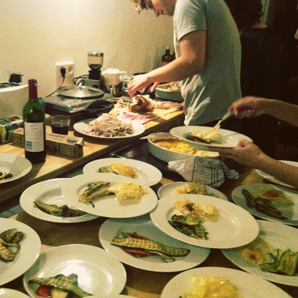 6 Dinners
6 Dinners
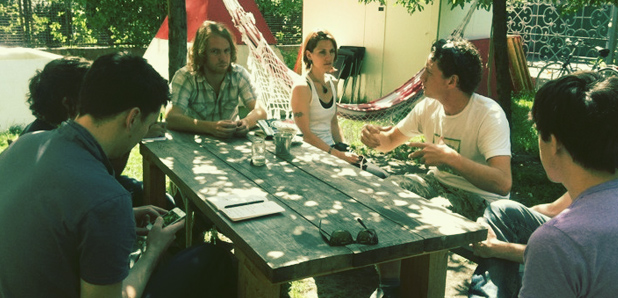 8 Countries
8 Countries
 145k Km Traveled
145k Km Traveled
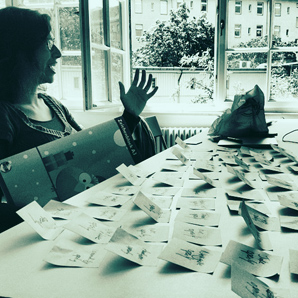 35 Blog Posts
35 Blog Posts
 12 Showcases
12 Showcases
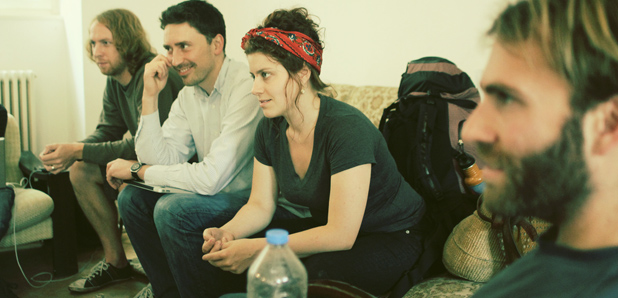 1 Mechanical Mooc
1 Mechanical Mooc
See more milestones and funny facts in our DATUM profile.